Get your building products to market faster and ensure full regulatory compliance with Element and our market-leading sister brands, FIRAS, Warringtonfire and BM TRADA. With our global network of accredited labs, we provide the expertise and testing services you need to succeed—no matter where you are in the world.
What is building product testing and why is it important?
Building product testing is essential for ensuring that products and components used in construction—ranging from doors, windows and shutters to floors, ceilings and timber panels—meet the ever-changing demands of the construction industry. As building products continue to evolve, independent technical support becomes crucial to ensure compliance with strict regulations and market requirements. Element provides that support with precise, accredited testing and inspection, helping you bring safe, high-quality products to market.
Key Benefits of Building Product Testing at Element
- Global Building Product Testing Expertise: Benefit from Element’s extensive network of accredited laboratories worldwide, along with its sister brands FIRAS, Warringtonfire and BM TRADA, offering unmatched expertise in building product testing across Europe, the Middle East, North America, and Asia Pacific.
- Accredited and Reliable Testing Services: Trust in Element’s laboratories, backed by rigorous quality control and recognized by leading industry bodies, such as AASHTO, CCRL, ICC, UKAS and BELAC to deliver accurate, reliable and high-quality results, every time.
- Innovation in Building Products: R&D Support: Accelerate your product innovation with Element’s specialized research and development support, including material selection, reverse engineering, and non-destructive testing.
- Tailored Testing for Complex and Custom Projects: Element offers customized testing solutions designed to meet your unique project needs, no matter how complex or specialized your requirements may be.
- Advanced Testing Across All Material Types: Leverage Element’s advanced testing capabilities, covering a wide range of materials and components, to ensure your products perform under any condition.
- Ensuring Quality with Ongoing Maintenance and Calibration: Element’s commitment to ongoing equipment maintenance and calibration ensures the highest standards of quality and accuracy in all of our testing services.
- End-to-end Testing Capabilities: Element’s building products testing capabilities cover a variety of test types and consulting services. Our experts can work with you to develop new test protocols, interpret building codes, provide product and engineering support, and more.
- Expert Advice and Guidance: Our experts advise you in selecting a meaningful test plan to address your specific end needs covering safety, quality, regulatory compliance, performance and lifecycle against appropriate test standards.
Streamlined Testing Processes to Save Time and Money
Element’s integrated services are designed to simplify your testing processes, helping you bring better products to market faster while cutting costs and minimizing risk. From early research and development to manufacturing, product evaluation, and third-party certification, we provide a holistic range of services that cover the entire product lifecycle. Our experts work alongside key stakeholders at every stage of your project, ensuring seamless communication and support from concept through to completion.
Market Access and Global Compliance
In a competitive market, getting your building products to market quickly and cost-effectively is crucial. Element’s global network helps you meet international regulatory standards and achieve global market access with ease. We make sure your products not only comply with safety and specification requirements but also excel in quality and performance, helping you stand out from the competition and build customer confidence.


Building Product Services We Offer
Element provides independent specialist testing services for a wide range of construction products, components, systems and structures, tailored to meet your specific needs.
Research & development
Element supports you in the early research and development stages with material selection, reverse engineering, non-destructive testing, and other services. We help you innovate and refine your products from the start.
Manufacturing phase
During manufacturing, our team provides crucial testing services—from mechanical testing to environmental simulations and tensile testing to packaging evaluation—ensuring your products are market-ready. Our failure analysts identify potential issues early, turning them into opportunities to reduce future costs and prevent surprises.
Product evaluation
When it’s time for product evaluation, your dedicated Element team brings advanced instrumentation, deep industry knowledge, and the necessary accreditations to test your products against standards like ICC-ES and Miami-Dade, ensuring they meet all required codes and regulations.
Certification services
Element offers comprehensive certification services to ensure your building products meet the necessary safety, quality, and performance standards for global market access. Some of our certification services include:
- CE marking
- UKCA
- CERTIFIRE
- QMark
- FIRAS
Find out more about the certification services offered by our sister company BM Trada and the full range of fire and non-fire third-party Warringtonfire’s certification services.
Why Choose Element?
Element offers a unique combination of technical expertise, advanced facilities, and a comprehensive service portfolio that covers a wide variety of building products and product types. With our extensive testing and consulting capabilities, we provide you with everything you need to ensure your products meet the highest standards.
Our dedicated team of experts delivers integrated testing, inspection, certification, and advisory solutions, offering you the deepest expertise and widest scope of services in the industry.
As a leader in building product testing, we provide reliable, globally accessible services that ensure compliance, drive innovation, and uphold quality in your construction projects. Our holistic approach helps you develop better products on time, reduce costs, and minimize risks.
For more information about our building testing services, or to request a quote, talk to an expert today.
Steiner Tunnel Testing: reaction-to-fire testing on interior finish materials
A guide to understanding the Steiner Tunnel test and the differences between ASTM E84 and CAN/ULC-S102. READ MOREAsbestos inspection on a nuclear power plant
Read our case study and learn how the scale and complexity of nuclear power stations are challenging environments for critical asbestos work.
LEARN MOREApplication of Acoustic Testing in Fenestration
Read about a solution to increase the Sound Transmission Class (STC) and Outdoor-Indoor Transmission Class ratings and improve end-user satisfaction.
READ MORETesting Combustible Properties of Plastics in Building Materials
When used in construction as part of the building envelope, it is imperative that plastics used adhere to established minimum requirements to reduce the risks imposed by fire.
READ MOREOur services
Click on one of the links below to learn more about our Building Product Testing Services
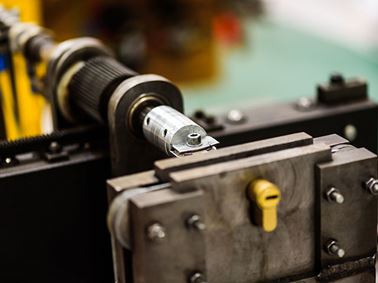
Architectural Hardware
Find out about Element's industry-leading operational testing, quality control, durability, corrosion resistance, thermal testing and security testing for door hardware.
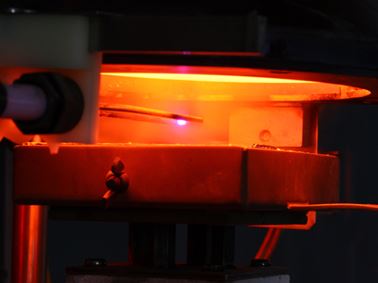
Cone Calorimeter
Find out why the cone calorimeter test is a cost-effective way to research the fire performance of products.
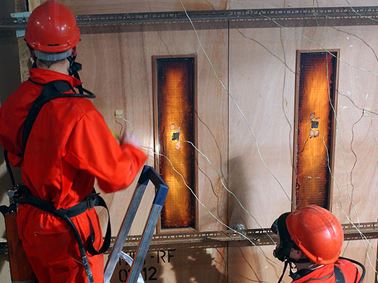
Doorsets and Shutters
Element’s sister company Warringtonfire offers accredited fire resistance testing services for doorsets, door hardware and shutters.
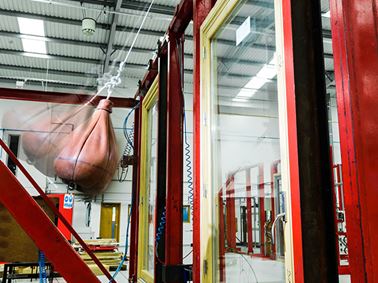
Doors & Windows
Find out how Elements experts test doors and windows for air permeability, water tightness and wind resistance; mechanical strength and durability and enhanced security to British, European and International standards.
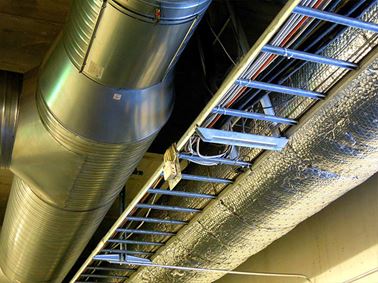
Ducts and Dampers
Find out about Warringtonfire’s fire resistance duct and dampers testing capabilities from its BELAC accredited laboratory in Gent.
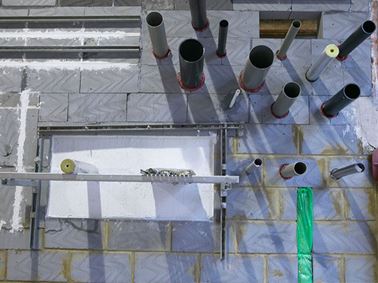
Fire Stopping and Penetrations
Find out about Warringtonfire's UKAS, BELAC and NATA accredited fire stopping product testing services.
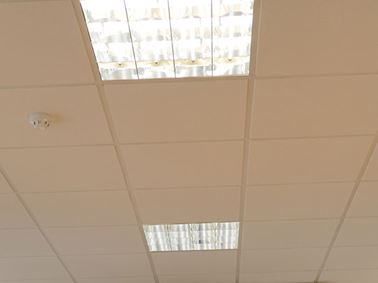
Floor and Suspended Ceilings
Element’s sister company Warringtonfire can provide reaction to fire, combustibility, as well as fire resistance, testing for all your floor and suspended ceiling system requirements
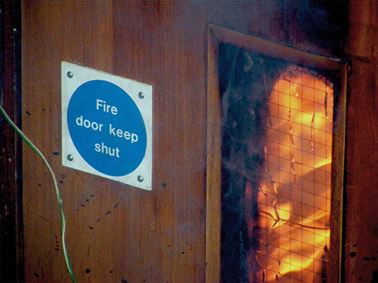
Glass and Glazing
UKAS, BELAC and NATA accredited glass and glazing systems fire testing services from our sister company Warringtonfire - designed to meet British, European and International standards

Insulation Flammability Testing
Flammability testing for thermal insulation is provided by Warringtonfire to BS 5803-4, as well as fire resistance tests under BS 476-1 and BS EN 13501-1
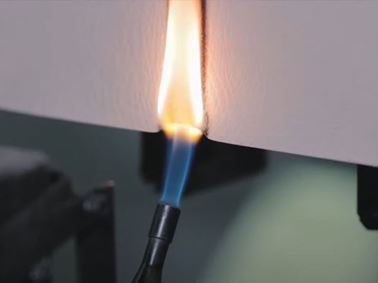
Plastics and Surface Materials
Learn how Warringtonfire can help test how your plastics and surface materials will react in a real-life fire situation, to ensure the products you develop are fit for purpose.

Radiant Panel Test
Learn about Element's radiant panel test and how it can help you evaluate the reaction-to-fire properties of your floor system.
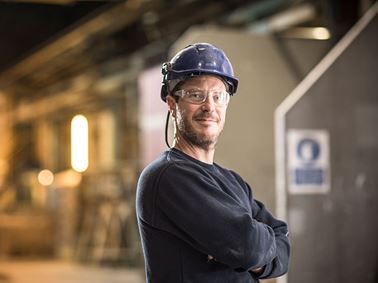
Smoke Curtains and Components
Learn how Warringtonfire’s smoke curtain testing to various standards, including BS and EN, can help you meet building regulations requirements.
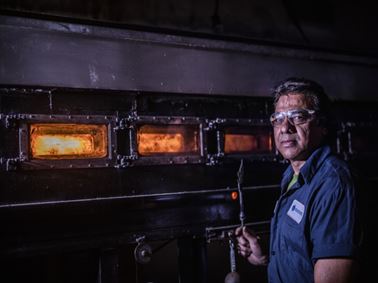
Steiner Tunnel Testing
Learn about how Element performs the Steiner Tunnel test to both North American and Middle East standards ASTM E84, UL 723, CAN/ULC-S102 and CAN/ULC-S102.2.
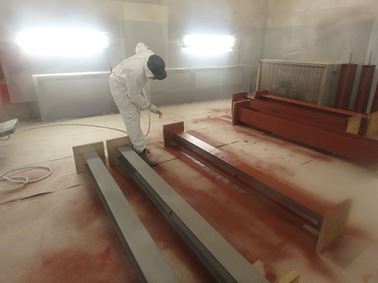
Structural Steelwork
Warringtonfire is fully equipped to guide you through the structural steelwork protection testing process from start to finish. We offer an end-to-end solution including independent fire testing, fire engineering and fire certification services.
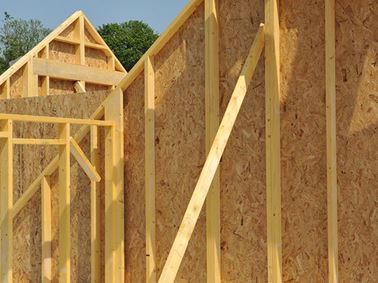
Timber Panel Products
Timber panel products need to be tested for both reaction to fire and fire resistance. Find out how our sister company, Warringtonfire, can help
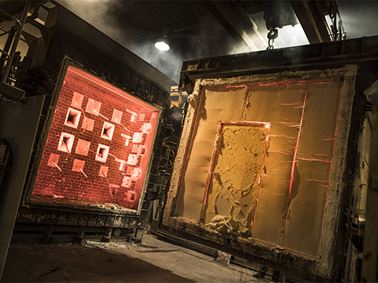
Wall and Partition Systems
Warringtonfire provides accredited fire resistance testing of walls and partition walls to British, European and International standards for load bearing systems and non-load bearing systems from our accredited laboratories.
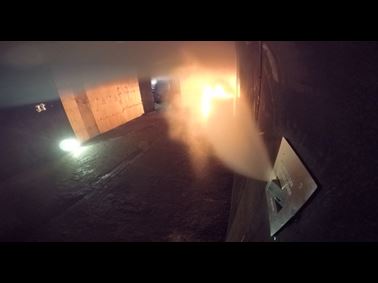
Water Mist Systems
Find out how Warringtonfire has recently expanded its fire testing capabilities through its expanded water mist systems testing capability.

